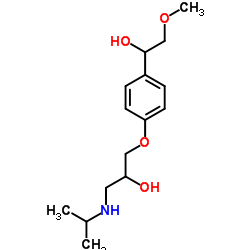Utility of a one-point (3-hour postdose) plasma metabolic ratio as a phenotyping test using metoprolol in two east Asian populations.
D R Sohn, M Kusaka, S G Shin, I J Jang, K Chiba, T Ishizaki
文献索引:Ther. Drug Monit. 14(3) , 184-9, (1992)
全文:HTML全文
摘要
We examined the utility of the postdose 3-h plasma metabolic ratio (MR) as a phenotyping method for assessing genetically determined debrisoquine-type oxidation polymorphism after an oral dose of 100 mg of metoprolol tartrate administered to 402 unrelated, healthy, and native East Asian (218 Korean and 184 Japanese) subjects. All of them were phenotyped simultaneously with the reported MR employing urine samples collected during an 8-h postdose period. In the two populations, the distribution histograms and probit plots of log10plasma MRs derived from the metoprolol/alpha-hydroxymetoprolol concentration values indicated a large gap between the extensive and poor metabolizers who were phenotyped by the reported criteria of the 8-h urinary MR. There were statistically significant (p less than 0.001) correlations (rs = 0.688 and 0.810, respectively) between the postdose urinary and plasma MRs in the Korean and Japanese populations. Two poor metabolizers (one each included in the two racial groups) identified according to the 8-h urinary MR gave the greatest plasma MRs (i.e., 549.7 among the Koreans and 150.0 among the Japanese). The results suggest that the one-point, postdose 3-h plasma MR is also useful for the phenotyping purpose of oxidation pharmacogenetic polymorphism of metoprolol, a widely prescribed beta-adrenoceptor blocking drug.
相关化合物
| 结构式 | 名称/CAS号 | 分子式 | 全部文献 |
|---|---|---|---|
 |
α-羟基美托洛尔(非对映异构体混合物)
CAS:56392-16-6 |
C15H25NO4 |
|
Simultaneous determination of metoprolol and α-hydroxymetopr...
2012-12-01 [Bioanalysis 4(23) , 2781-93, (2012)] |
|
Metoprolol oxidation polymorphism in Brazilian elderly cardi...
2013-09-01 [J. Pharm. Pharmacol. 65(9) , 1347-53, (2013)] |
|
Variation of pharmacokinetics after oral administration of s...
1992-06-01 [Arzneimittelforschung 42(6) , 802-6, (1992)] |
|
Simultaneous RP-HPLC determination of sotalol, metoprolol, a...
2009-06-01 [Anal. Sci. 25(6) , 769-72, (2009)] |
|
Effects and pharmacokinetics of high dose metoprolol on ches...
1997-01-01 [Eur. J. Clin. Pharmacol. 53(1) , 23-31, (1997)] |